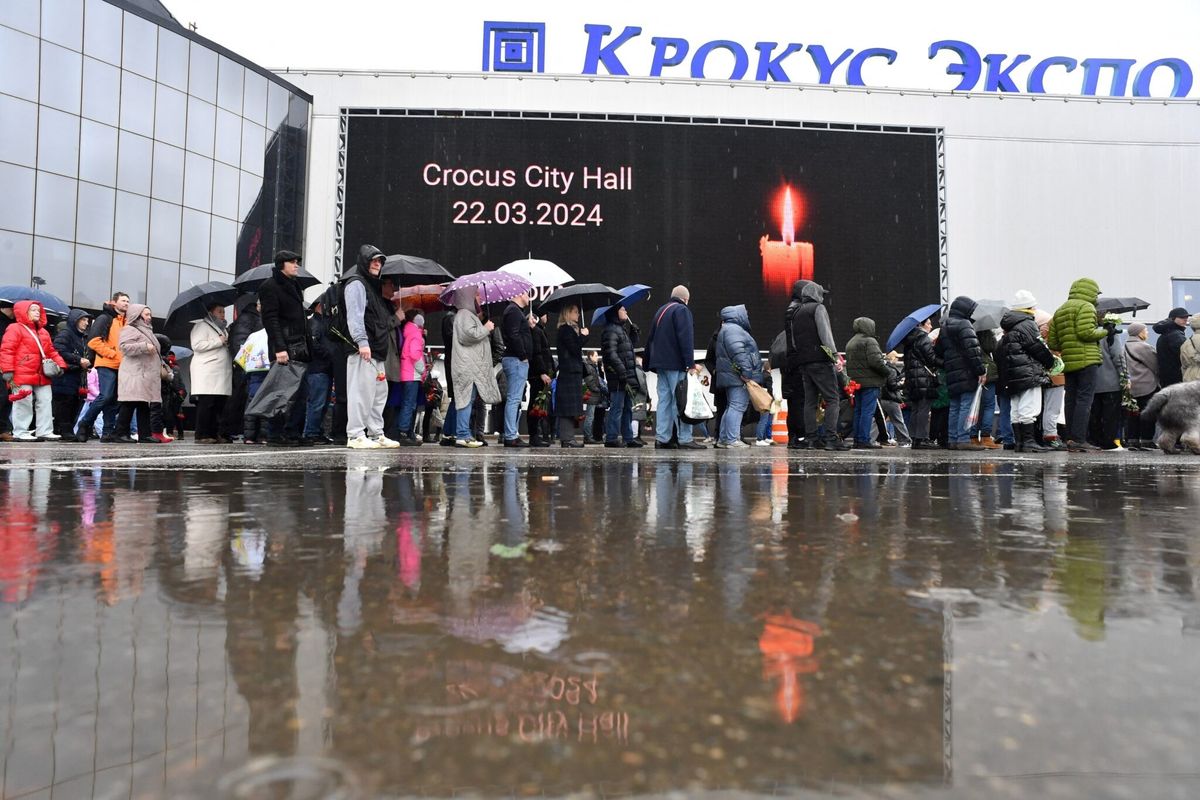Since 9/11, eliminating terrorist leaders through a strategy known as leadership decapitation has emerged as key pillar of the United States’ counterterrorism strategy. Although the U.S. has successfully removed numerous terrorists from the battlefield, leadership decapitation does not necessarily equate to the destruction of a terrorist organization, especially groups with ties to local populations. The Cipher Brief spoke with Robert Pape, a Professor of Political Science at the University of Chicago, about when leadership decapitation can prove effective and some of the factors that should be considered when implementing this approach.
The Cipher Brief: Is leadership decapitation, which some people refer to it as “mowing the grass” or “mowing the lawn,” an effective part of U.S. counterterrorism strategy?
Robert Pape: As a general matter, leadership decapitation is not a particularly effective counterterrorism strategy. There are special circumstances when leadership decapitation can work against militant groups, but those circumstances tend to be unusual and rare. In general, the strategy is just not particularly effective.
TCB: What are the circumstances in which this type of approach is most effective?
Pape: The strategy of leadership decapitation is more likely to work against a vanguard group that is not socially connected or socially embedded in the local community. For example, core al Qaeda in Afghanistan and Pakistan fits that model because you have a group that is composed largely of leaders and a handful of people who are not deeply embedded socially in the local area that they inhabit.
What that means is that when you kill or arrest these leaders and take them off the battlefield, they are not so easily regenerated by the group. That has happened with some other terrorist groups in the past, such as Black September, a Palestinian terrorist group from the 1970s, where the Israelis successfully used leadership decapitation to put the group out of commission. Black September tended to operate in countries where the members of the group – and there were only about 30 – were not socially connected with their surrounding society and were not part of pre-existing social groups.
So you do have opportunities with core al Qaeda to have meaningful leadership decapitation, which can be difficult for the group to regenerate. In general, however, that is an unusual circumstance for militant groups. If you look at the Afghan Taliban, the Pakistani Taliban, ISIS, al Shabaab, or most of the main militant groups that are at the center of U.S. counterterrorism policies, they are not vanguard groups.
The groups that are at the center of American counterterrorism policy over the last ten years have been groups that are quite deeply socially embedded in their surrounding communities, meaning that the leaders and their fighters are coming heavily from pre-existing social groups. Leadership decapitation in those circumstances has produced quite temporary results.
It’s not that there’s no benefit – there can certainly be tactical disruption of a few weeks of certain operations – but when militant groups are socially embedded, it is quite possible to regenerate those leaders and sometimes recruit even larger numbers as the next generation. This is why it’s important to identify the special circumstances when leadership decapitation is more likely to be effective.
TCB: I wanted to ask you specifically about ISIS because they have such a large influx of foreign fighters. How does that play into leadership decapitation strategy? Would you say that they’re more socially ingrained in a sense because they’re foreign fighters?
Pape: Although ISIS’ leadership is not completely Syrian and Iraqi, it is heavily Syrian and Iraqi, including ISIS leader Abu Bakr al-Baghdadi, who is an Iraqi. What we are seeing from the core ISIS leaders is a group that has discovered the virtues of being socially embedded. If you socially embed yourself as a militant group in your surrounding society, you are tapping directly into preexisting networks that can provide intelligence, material support, fighters, mid-level leaders, and top leaders.
This is a major achievement accomplished by ISIS that the former leader of al Qaeda in Iraq (the predecessor to ISIS), Abu Musab al-Zarqawi, was slow to realize in 2004 and 2005. In fact, in 2004, Zarqawi wrote a letter to al Qaeda leader Osama bin Laden about his strategy, and bin Laden wrote him back about a year later in 2005 advising him to socially embed his group in Iraq and the local societies for many of the reasons that we have discussed.
What is also very important is the extent to which a militant group is socially embedded. If we use examples of militant groups that are not socially embedded and say that leadership decapitation worked in those instances, that does not necessarily mean that the strategy will transfer over to groups that are socially embedded.
One circumstance where killing leaders can produce results, even if a group is socially embedded, is when the leaders of a group are killed as part of a ground force operation, and the operation continues to immediately conduct sweeps of other members of the organization. Take, for instance, the Tamil Tigers, which is a very famous militant group that is no longer around after it went out of business in 2009. Leadership decapitation certainly occurred when the Sri Lankan army launched a massive ground operation in Jaffna, an area in Sri-Lanka that Velupillai Prabhakaran, the leader, was operating in. The army killed Prabhakaran, but it also did so with tens of thousands of troops occupying the territory, which enabled them to find him with ground forces and then continue to destroy the rest of the group immediately.
TCB: Has the U.S. relied too heavily on leadership decapitation tactic as its primary counterterrorism approach? In other words, has the U.S. failed to implement this strategy to take into account factors such as local ties?
Pape: One issue is that we have painted with too broad a brush by saying that leadership decapitation either works or fails. That is a mistake. We have failed to identify key circumstances of success and failure so that we can understand the “why,” behind them.
We need to understand the circumstances better. There’s not a large constituency out there that complains about the morality of targeting terrorist leaders, which is why we have seen an increased use of leadership decapitation. But that doesn’t mean that it’s always effective, and what I mean by effective is a sustained strategic effect on a group. Everybody will credit that once you kill leaders you can disrupt the organization for a few weeks, but the real issue is if that disruption is just temporary or if it is going to be relatively quickly overcome with an even larger wave of support for the group.
TCB: Do you think drone technology has made the U.S. more eager to implement leadership decapitation as a strategy?
Pape: Yes. Drones are simply a manifestation of the precision air revolution, which started in the mid 1980s, spread in the 1990s, and has continued through today. The first major precision air attack occurred in 1986 when a U.S. aircraft with precision bombs attacked Libyan leader Muammar Gaddafi. We bombed his tent and missed killing him, but we killed his daughter, and a lot of people weren’t too upset about that. Two years later, however, Gaddafi bombed Pan Am flight 103, killing nearly 300 people in retaliation.
The precision revolution has simply grown more and more sophisticated. But now, it’s not precision manned aircraft, it’s drones, and drones have greater loiter time that allows them to use real time intelligence in more sophisticated ways. What that does is it increases the prospects of finding and killing individuals.
That said, the real issue here is whether the growing accuracy and ability to kill individuals and leaders is really producing strategic benefits. The answer is not very often. The main circumstances I’m identifying are when those strategic benefits are produced, otherwise the results are meager.













